Results 10,261 to 10,270 of 12094
Thread: Anandtech News
-
01-21-20, 10:05 AM #10261
Anandtech: The AMD Radeon RX 5600 XT Review, Feat. Sapphire Pulse: A New Challenger F
While at this point we’ve pretty much reached the “mid-generation” point in the GPU space, that doesn’t mean activity in the GPU market is slowing down. Indeed, just three weeks into 2020 and AMD is already up to bat with a new video card, the Radeon RX 5600 XT. Announced a couple of weeks back at CES 2020, the Radeon RX 5600 XT is AMD’s answer to the $200-$300 mainstream video card segment, and is designed to be their ultimate 1080p gaming card. And of all of the AMD RX 5000 series video card launches in the last six months, it’s quickly shaping up to be the biggest fight yet between AMD and NVIDIA.
More...
-
01-21-20, 10:05 AM #10262
Anandtech: SteelSeries Launches Low-Cost Gaming Peripherals With The Rival 3 Gaming M
Often we see a lot of fanfare when companies launch their latest flagship products, but those products often come at the high-end of the price spectrum, so it is refreshing to get a new launch of some lower-cost alternatives. SteelSeries is launching a trio of new peripherals today all aimed at the budget-conscious gamer with the new Rival 3 Gaming Mouse, as well as the Apex 3 and Apex 5 gaming keyboards.
Rival 3 Gaming Mouse
What constitutes a gaming mouse? It is certainly not just the RGB lighting, although most, including this product, offer customizable lighting. The mouse sensor is one of the key aspects, and SteelSeries worked with PixArt to develop a new sensor which they’ve dubbed the TrueMove Core optical sensor. The new sensor offers 8500 CPI, one-to-one tracking, and over 300 IPS and 35G of acceleration capability. For a mouse in this price bracket, it is very capable.
The Rival 3 is a right handed mouse (if you need an ambidextrous they offer the Sensei series) which weighs in at just 77 grams. It offers three zones of RGB backlighting which achieves 750 lux, making this the brightest LEDs in any SteelSeries mouse. There are six buttons and the main buttons feature a SteelSeries switch rated at up to 60 million clicks, whereas a comparable Omron would only be rated at 10-20 million. The casing is finished in matte black, so it should stand up well to the test of time.SteelSeries Gaming Mouse Rival 3 Sensor TrueMove Core Sensor CPI True 8500 Acceleration 300 IPS / 35 G RGB Backlighting 3 Zones Weight 77 grams Onboard Storage 5 profiles Main Buttons SteelSeries 60 M Click Rating Total Buttons 6 Mouse Type Right-Handed MSRP $29.99
The mouse features customization through the SteelSeries Engine software, and offers onboard storage for five profiles, so even if it’s not used with the software, you can still choose your CPI profile on the go.
Gallery: SteelSeries Rival 3 Gaming Mouse





The new Rival 3 Gaming Mouse is available globally today for a MSRP of $29.99.
Apex Gaming Keyboards
SteelSeries is also launching two new gaming keyboards which feature anti-ghosting and RGB lighting, without breaking the bank. The Apex 3 is launching today with an MSRP of $49.99, and the Apex 5 is available globally for $99.99.SteelSeries Gaming Keyboards Apex 3 Apex 5 Switch Type POM Reinforced Membrane Hybrid Mechanical Key Cap Standard MX 4mm throw RGB Backlighting 10-Zone Per-Key Frame Plastic Aluminum Cable Management 3-Way 3-Way Onboard Storage No 5 profiles Media Keys Yes with Volume Wheel Yes with Volume Wheel Wrist Rest Detachable Magnetic Detachable Magnetic OLED Display No Yes MSRP $49.99 $99.99
The Apex 3 features an upgraded and reinforced membrane switch, which SteelSeries says offers an improved key feel. The keyboard offers ten zones of RGB backlighting as well, and a magnetically attached wrist rest. There’s dedicated media keys, and a volume wheel as well, and the keyboard offers three routes for cable management so you can route the USB cable out the left, right, or middle of the keyboard. Finally, the Apex 3 is rated for IP32 water resistance, so it should survive an accidental spill.
Gallery: SteelSeries Apex 3 Gaming Keyboard





The Apex 5 ramps up the features, as expected since it is literally double the price of the Apex 3, but for $99.99 this gaming keyboard offers hybrid mechanical switches, which are true mechanical switches, but which feature the smoothness of a membrane switch coupled with the click of a blue switch. The keys are also individual backlit with per-key RGB lighting.
The Apex 5 features the same OLED display as the Apex 7 and Pro lineup, which can be used to view in-game info, song information, and more. The OLED is coupled with media keys, and offers five onboard profiles meaning the keyboard can remember your settings as you move it from device to device.
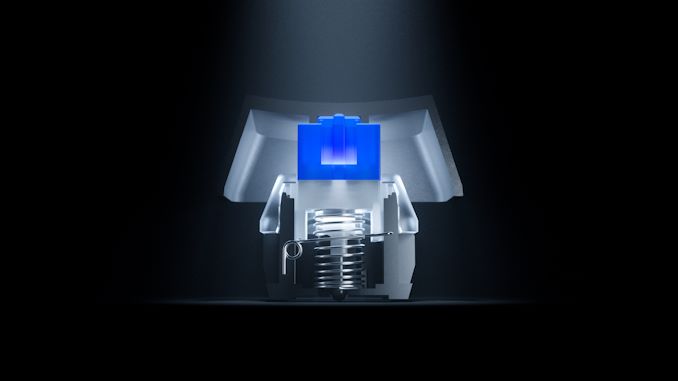
The Apex 5 also features a full aluminum frame, and offers a premium magnetically attached wrist rest.
Gallery: SteelSeries Apex 5 Gaming Keyboard





All of these products are available globally today. Check out SteelSeries.com for more details.
More...
-
01-21-20, 02:28 PM #10263
Anandtech: ZOTAC’s UCFF Zbox Magnus EN92080V: Up to 8-Core i9 and RTX 2080
ZOTAC introduced its upcoming high performance ultra-compact form-factor (UCFF) gaming machine that promises to offer performance of a high-end gaming laptop. The Zbox Magnus EN92080V packs an Intel eight-core processor as well as NVIDIA’s GeForce RTX 2080.
The ZOTAC Zbox Magnus EN92080V comes in a slim chassis that measures only 62.2 mm (2.45 inches) in height and features a volume of just 2.65 liters. The PC it is powered by Intel’s eight-core Core i9 processor (with a 45 W TDP) as well as NVIDIA’s GeForce RTX 2080 graphics processor in its version for laptops. It is unclear whether the GPU is soldered down to the motherboard of the model EN9280V, or is located on an MXM card and thus can be upgraded eventually. It's worth noting that the Zbox Magnus EN92080V does not seem to have a Thunderbolt 3 port, but the UCFF gaming PC can house up to 32 GB of DDR4-2666 memory using two SO-DIMM slots, one 2.5-inch storage device, and an SSD in an M.2 form-factor, so at least memory and storage can be expanded.
Moving on to connectivity of the Zbox Magnus EN92080V, everything looks pretty standard for today’s gaming laptops. The machine features the Rivet Killer AX1650 Wi-Fi 6 + Bluetooth 5 adapter, two Ethernet ports (one GbE, one 2.5 GbE, also from Rivet), two USB 3.1 Type-C connectors, four USB 3.0 Type-A connectors, four display outputs (one DisplayPort 1.4, two HDMI 2.0b, one USB-C), and SD card reader, and two 3.5-mm audio jacks for headphones and a microphone.
Historically, ZOTAC used GeForce MXM modules for its small form-factor Zbox Magnus systems, but improved energy efficiency of NVIDIA’s desktop GPUs and ZOTAC’s own cooling systems allowed the company to switch to regular graphics cards and enable its customers to upgrade them. With the Zbox Magnus EN92080V, ZOTAC uses a mobile CPU and a mobile GPU again, but this time to make a UCFF gaming PC that offers performance of a premium desktop computer.
ZOTAC will start sales of its Zbox Magnus EN92080V in the coming months. Pricing will be revealed when the product is launched.
Related Reading:
- ZOTAC Preps SFF Workstation with NVIDIA’s Quadro, Intel’s 10 GbE NICs
- Zotac at CES 2018: ZBOX MAGNUS Upgraded with Coffee
- Zotac ZBOX MAGNUS EN1080K Compact Gaming PC Review
Sources: ZOTAC
More...
-
-
01-22-20, 10:21 AM #10265
Anandtech: TSMC Boosts CapEx by $1 Billion, Expects 5N Node to Be Major Success
TSMC is on track to begin high-volume production of chips using its 5 nm technology in the coming months, the company said in its conference call last week. While so far the number of 5 nm tape-outs is lower when compared to the number of 7 nm tape-outs several months before production start, TSMC expects the process to become a major commercial success. Meanwhile, to ensure that it has no production constraints, the company plans to increase its 2020 CapEx by $1 billion.
It is well known that TSMC’s N5 manufacturing technology provides substantial improvements over the company’s N7 fabrication process (1.8x higher transistor density, +15% frequency or -20% power consumption), so major customers of the company are more than inclined to adopt it. TSMC is on track to start high volume manufacturing (HVM) using the technology in the first half of this year. So far, the number of N5 tape-outs is lower when compared to the number of N7 tape-outs at the same stage of development (i.e., several months before HVM) becase alpha customers have taped out a slightly lower number of N5 designs and other clients are yet to catch up. Meanwhile, TSMC remains optimistic about the technology’s ramp and expects N5 revenue to account for 10% of its 2020 wafer sales revenue, which essentially means that business performance of N5 in its first year will be the same as business performance of N7 in its first year.
There are several reasons why TSMC’s N7 node turned out to be a huge commercial success for the foundry. First up, most of its customers skipped the 10 nm node and were more than motivated to go with 7 nm. Secondly, TSMC did not have a strong competition with its N7 technology: GlobalFoundries pulled out of the 7 nm race, whereas Samsung Foundry hardly processed any significant number of wafers using its 7LPP process. Thirdly, because N7 is a considerably more complex technology than TSMC’s 16 nm or 10 nm nodes, the company charges more money per wafer than before, which drives a greater revenue share for the process.
C. C. Wei, Vice Chairman and CEO of TSMC said the following:
“The 5 nm tape-out is little bit less than 7 nm compared at the same stage of the time. However, the most important thing is that the high-volume tape-out is almost equal. So, we expect that our 5 nm ramp is a very fast and smooth and it will contribute about 10% to this year's revenue."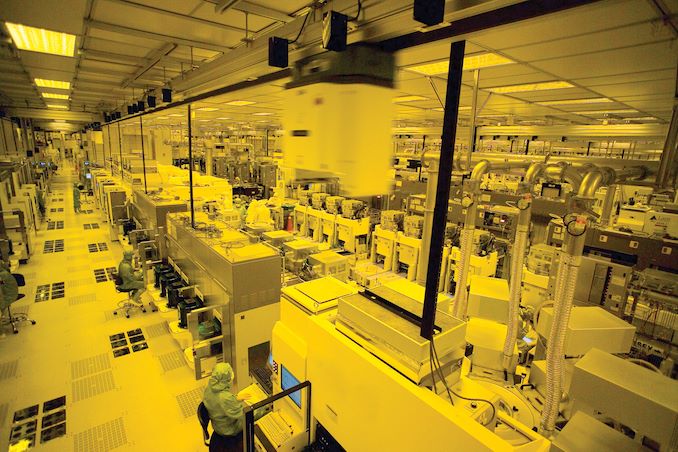
Since TSMC’s N7 is considered as a long-living node, demand for the process is not expected to drop radically when N5 enters HVM, as there are tens of fabless semiconductor developers waiting to produce their 7 nm designs. Apparently, to satisfy demand for chips made using TSMC’s N7, N7+, N7P, N6, N5, and N5P manufacturing technologies (and offer some additional capacity for specialty processes as well as for advanced packaging), the company will have to further increase its 2020 CapEx by a billion of dollars up from $14 billion - $15 billion estimated last year.
TSMC does not say exactly how the additional $1 billion will be spent, but since in the coming quarters it will be ramping production using four process technologies that that use extreme ultraviolet lithography (EUVL) for select layers (up to 14 layers in case of N5, up from 4 and 5 in case of N7+ and N6) and multipatterning for some others, it is likely that the foundry is going to need some additional leading-edge equipment.
Wendell Huang, VP and CFO of TSMC, said the following:
“Other than the advanced technology, we also mentioned earlier, we also increased the CapEx this year for specialty technology as well as advanced packaging. So those are the areas that we are focusing on.”Related Reading:
- TSMC: 5nm on Track for Q2 2020 HVM, Will Ramp Faster Than 7nm
- TSMC Radically Boosts CapEx to Expand Production Capacities, To Reach $14B For 2019
- Early TSMC 5nm Test Chip Yields 80%, HVM Coming in H1 2020
- TSMC: N7+ EUV Process Technology in High Volume, 6nm (N6) Coming Soon
Source: TSMC
More...
-
01-22-20, 12:13 PM #10266
Anandtech: Xiaomi Spins Off Poco to Separate Company
In a bid to address the smartphone market as broadly as possible, Xiaomi has introduced a number of sub-brands over the years, including Black Shark, Redmi, and Poco. But even with Xiaomi's deep involvement, those brands aren't necessarily meant to always stay tied to their parent company, it would seem. Effective immediately, Xiaomi is spinning of POCO entirely, transforming it into an independent company and will now have its own strategy that will not depend on Xiaomi.
So far, Poco has released only one smartphone, the Pocophone F1. The handset was launched in 2018 and offered a rather competitive combination of specifications and price. In the recent days rumors transpired that the Pocophone F2 was in the works and its launch was imminent. Around the same time, Xiaomi announced the spin off.
Manu Kumar Jain, VP of Xiaomi, said the following:
“Poco F1 is an extremely popular phone across user groups, and remains a top contender in its category even in 2020. We feel the time is right to let Poco operate on its own now, which is why we’re excited to announce that Poco will spin off as an independent brand,”
It is not completely clear how ownership of Poco will be structured. Meanwhile, as a separate entity, Poco will inevitably compete against Xiaomi, but it looks like both entities are prepared for that.
In the recent years Xiaomi has consistently introduced new categories of products in a bid to build up its own ecosystem and not only increase its ARPU (average revenue per user), but also attract new clients with new devices. And while Poco will initially target smartphones and other mobile devices, the overall small size of the firm and its product portfolio means that competition from this brand should not significantly affect Xiaomi’s business, at lease initially.
What remains to be seen is what exactly will Poco inherit from Xiaomi. Today, Poco uses Xiaomi's MIUI and some other software, so it will be interesting to see whether as a separate company Poco will develop its own UI and applications, or will continue to use something from Xiaomi.
Related Reading:
- Xiaomi’s Mi Note 10 Family: World’s First Smartphones with 108 MP Penta Camera Array
- Xiaomi Reveals 34-Inch Mi Surface Display: 144Hz WQHD w/FreeSync
- The Black Shark 2 Review: A Gaming Phone's Existential Crisis
- Xiaomi Mi Mix Alpha: A Truly All-Around 'Surround' Display Smartphone
- Xiaomi Unveils Black Shark 2 Pro: Snapdragon 855+, UFS 3.0 Storage
Source: TechCrunch
More...
-
01-22-20, 03:47 PM #10267
Anandtech: Acer Unveils TravelMate B3 Notebook & Convertible: 11.6-Inch LCD & Gemini
Alongside their new Chromebooks, Acer has also revealed a new set of inexpensive Windows laptops aimed at students. Powered by Intel’s Gemini Lake SoCs, Acer’s TravelMate B3 will be available in clamshell and convertible form-factors to satisfy different needs.
Acer’s TravelMate B3 machines use a rugged chassis made of plastic that is said to be impact resistant and therefore tough enough for educational environments. The mobile PCs are equipped with a 11.6-inch, 16:9 aspect ratio IPS display, with Acer offering either a 1366x768 or 1920x1080 resolution panel depending on SKU. Meanwhile, with a 20.95 mm z-height and at up to 1.49 kilograms weight the computers are clearly designed for longevity and durability over portability.
As noted above, the TravelMate B3 machines will be available in two form factors. The clamshell model will be sold as the TravelMate B3, while the convertible will be sold under Acer's Spin sub-brand as the TravelMate B3 Spin. Both portables are based on Intel’s low-power quad-core Gemini Lake Refresh SoC, and are accompanied by 4 GB or 8 GB of DDR4 memory as well as 64 GB, 128 GB, or 256 GB NAND flash storage.
As far as I/O features are concerned, the new Acer TravelMate B3 PCs feature Wi-Fi 5, Bluetooth 5, GbE, USB 3.2 Gen 1 Type-A and Type-C, HDMI, microSD, a 3.5-mm combo audio jack, a webcam, a microphone array, and speakers.
According to the manufacturer, the TravelMate B3s can work for up to 12 hours on one charge (based on MobileMark 2014 testing), which should be enough for one day in classes.
Acer’s TravelMate B3 and TravelMate Spin B3 will be available this April starting at $239 and $329, respectively.Acer’s TravelMate B3 & TravelMate Spin B3 TravelMate B3
(B311-31)TravelMate Spin B3
HD (B311R-31)TravelMate Spin B3
Full-HD (B311RN-31)Display Diagonal 11.6" IPS 11.6" IPS with touch Resolution 1366×768 1920×1080 Brightness ? cd/m² ? cd/m² ? cd/m² CPU Intel Celeron dual-core N4020
Intel Celeron quad-core N4120
Intel Pentium Silver quad-core N5030Graphics Intel UHD 600/605 Graphics RAM 4 GB or 8 GB DDR4 Storage 64 GB eMMC
128 GB eMMC
128 GB NVMe SSD
256 GB NVMe SSDWi-Fi Wi-Fi 5 Bluetooth Bluetooth 5.0 WWAN - - - GbE + + + USB 2 × USB 3.2 Gen 1 Type-C
1 × USB 3.2 Gen 1 Type-ACamera 720p webcam Other I/O microSD, TRRS connector for audio, speakers, microphones Battery 48 Wh Dimensions Thickness 20.95 mm | 0.82 inches Width 295 mm | 11.61 inches Depth 215 mm | 8.46 inches 212 mm | 8.35 inches Weight 1.4 kilograms | 3.08 pounds 1.49 kilograms| 3.28 pounds Battery Life 12 hours Price (starting at) $239 $329
Related Reading:
- Chuwi Launches The LapBook SE: Gemini Lake And SSD For $300
- Intel Launches New Pentium Silver and Celeron Atom Processors: Gemini Lake is Here
- CES 2020: ZOTAC Edge CI341, A SFF PC With 6 W Passively Cooled Intel Gemini Lake CPU
- Short Supply of Intel’s Gemini Lake Confirmed by PC Maker
Source: Acer
More...
-
01-22-20, 03:47 PM #10268
Anandtech: Acer Launches Chromebook 871/Chromebook 712: Intel’s Comet Lake Inside
Acer has introduced a new Chromebook computer designed specifically for the education environment. The upcoming Chromebook 871/Chromebook 712 machines are rugged enough to handle bumps of life at school and are based on Intel’s Comet Lake processors.
Acer’s Chromebook 871/Chromebook 712 comes in a Shale Black plastic chassis that is sufficiently tough to survive drops, shocks, high/low temperatures, and humid or dusty environments. To make the laptop as rugged as possible, Acer had to increase its z-height to 21.5 cm, which is rather thick, but a good news is that the notebook has a spill-resistant keyboard. As for weight, the machine weighs 1.4 kilograms.
The laptop is equipped with a 12-inch IPS display panel featuring a 1366x912 resolution as well as a 3:2 aspect ratio. In fact, the manufacturer plans to offer two versions of its Chromebooks 871: the model C871 with a regular screen as well as the model C871T with a touch-enabled screen.
The Acer Chromebook 871 – which will go by the Chromebook 712 in the retail market – is based on up to Intel’s dual-core Core i3-10110U processor, and is accompanied by 4 GB or 8 GB of DDR4 memory as well as 32 GB or 64 GB eMMC storage. Connectivity-wise, the laptop is rather typical by today’s standards as they feature Wi-Fi 5, Bluetooth 5, USB 3.2 Gen 1 Type-A and Type-C connectors, a microSD card reader, and a 3.5-mm audio jack for headsets. The Chromebook 871/Chromebook 712 from Acer also have a standard set of multimedia capabilities, such as a webcam, stereo speakers, a microphone array.
The manufacturer equipped its new Chromebooks with a 48 Wh battery, which is a rather high capacity for a 12-inch laptop. Meanwhile, Acer does not disclose actual battery life figures for its new Chromebooks.
Acer will start sales of its new Chromebook 871/Chromebook 712 laptops in North America in March and in EMEA in May. Prices of the PCs will start at $329.99 in the USA and €299 in Europe. The notebooks will be covered by a one year international warranty.Acer’s Chromebook 871/Chromebook 712 Chromebook 712 Display Diagonal 12" IPS with or without touch Resolution 1366×912 Brightness ? cd/m² CPU 10th Gen Core
(Comet Lake)
Intel Core i3-10110U
Intel Pentium Gold 6405U
Intel Celeron 5205UGraphics Intel UHD Graphics RAM 4 GB or 8 GB DDR4 Storage 32 GB or 64 GB eMMC Wi-Fi Wi-Fi 5 Bluetooth Bluetooth 5.0 WWAN - GbE - USB 2 × USB 3.2 Gen 1 Type-C
1 × USB 3.2 Gen 1 Type-ACamera Full-HD Other I/O microSD, TRRS connector for audio, speakers, microphones Battery 48 Wh Dimensions Thickness 21.5 mm | 0.85 inches Width 296 mm | 11.65 inches Depth 229 mm | 9.02 inches Weight 1.4 kilograms | 3.09 pounds Battery Life ? Price (starting at) $329.99 | €299
Related Reading:
- CES 2020: Lenovo Unveils IdeaPad Duet Chromebook Detachable
- Samsung Shows Off Premium Galaxy Chromebook at CES 2020: 13.3-inch Convertible With 4K AMOLED & More
- Acer Launches Rugged Chromebook Spin 311: An 11.6-Inch AMD A4-Based 2-in-1
- Acer Launches Six Chrome Enterprise PCs: Notebooks, Convertibles, Desktops
Source: Acer
More...
-
01-22-20, 06:01 PM #10269
Anandtech: Motorola’s $1500 Foldable Razr to Ship Early February: Pre-Orders Soon
Today Motorola announced it will ship its foldable flip smartphone on February 6 and will start pre-orders on January 26. The new Motorola Razr will be available for pre-order directly from the company, from Verizon, and from Walmart. Being a unique phone with a foldable display, the list price for the 2020 Razr without contract is set to be $1500.
The main feature of the new Motorola Razr is its exclusive clamshell design with a foldable 6.2-inch pOLED main screen and a 2.7-inch OLED external display. Because of internal architecture of the smartphone, and space constraints, Motorola use Qualcomm’s mid-range Snapdragon 710 SoC with 6 GB of RAM and 128 GB of storage rather than a flagship 8-series SoCs.
Motorola originally planned to start taking pre-orders on the new Razr on December 26, 2019, to then begin shipments on January 6, 2020. As it turns out, the demand for the foldable flip smartphone was so high that the company had to delay its launch to build more units.
The new Motorola Razr will cost $1,499. Verizon will offer trade-in programs to its customers (up to $300 per device) and those who switch to it (up to $500 per device) to sweeten the deal. Furthermore, it will be possible to split up the price of the new Razr to 24 payments of $62.49 a month.
Related Reading:
- Motorola Brings Back The Razr: Flip-Phone In 2020
- Quick Bytes: Motorola in Profit, 2020 Focus on Innovation, Foldables, and 5G
Source: The Verge, Slashgear
More...
-
01-22-20, 06:01 PM #10270
Anandtech: TerraMaster Reveals TD2 Thunderbolt 3 DAS: 2 Bays For 32 TB
TerraMaster has unveiled a new entry-level Thunderbolt 3 DAS, the aptly named TD2 Thunderbolt 3, which is aimed at video professionals who need a relatively small storage device that still provides ample capacity. On the whole the new dual-bay DAS is relatively basic, with TerraMaster aiming to keep the retail price down while still offering enough performance for today's on-set video workflows.
TerraMaster’s TD2 Thunderbolt 3 DAS can house two 2.5-inch or 3.5-inch SATA storage devices operating in single disk, JBOD, RAID 0, or RAID 1 mode (selectable using a hardware knob on the back). At present, the device supports up to two 16 TB hard drives, offering a current maximum capacity of 32 TB. As for performance, TerraMaster says that the DAS can support up to 760 MB/s read speeds when two SSDs are used. To ensure that the drives installed in the DAS do not overheat, the product also has its own cooling system.
The TD2 Thunderbolt 3 DAS has two Thunderbolt 3 connectors to daisy chain the device with another TB3 appliances, as a DisplayPort to easily connect a 4K monitor without using an additional port and/or cable. Meanwhile, it's worth noting that the DAS does not to support power delivery back to the host.
TerraMaster’s TD2 Thunderbolt 3 DAS is now available directly from the company as a barebones device for $249.
Related Reading:
- OWC Launches ThunderBay 4 Mini DAS: 4 SATA Bays With SoftRAID, Up to 1.5 GB/s
- OWC Mercury Elite Pro Dock / DAS Combo: TB3, up to 28 TB, USB 3.0, DP, GbE, SD
- OWC Unveils Second-Gen ThunderBlade External SSDs: 2800 MB/s Starting at $799
- G-Technology Unveils G-Speed, G-Drive Pro External SSDs: High Speed DAS For Workstations
Source: TerraMaster
More...
Thread Information
Users Browsing this Thread
There are currently 11 users browsing this thread. (0 members and 11 guests)





 Quote
Quote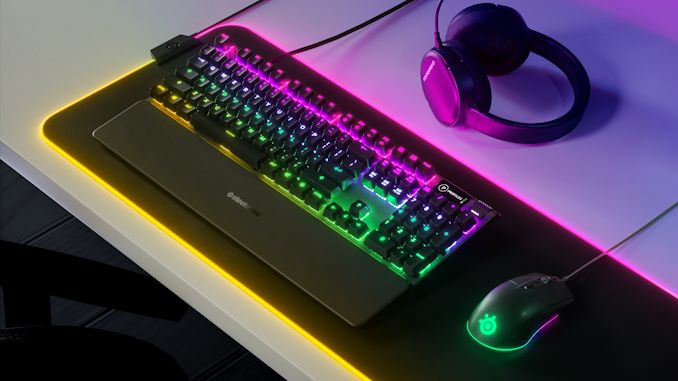
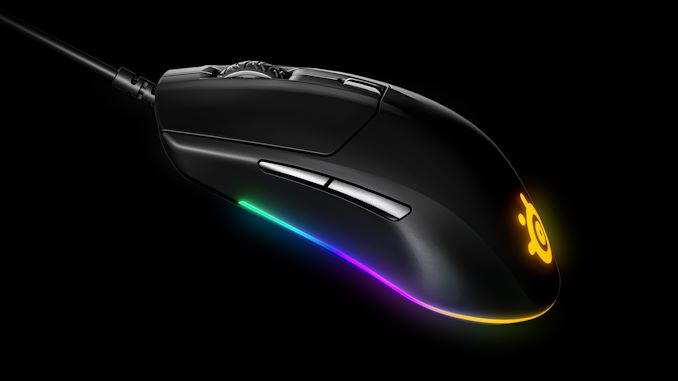

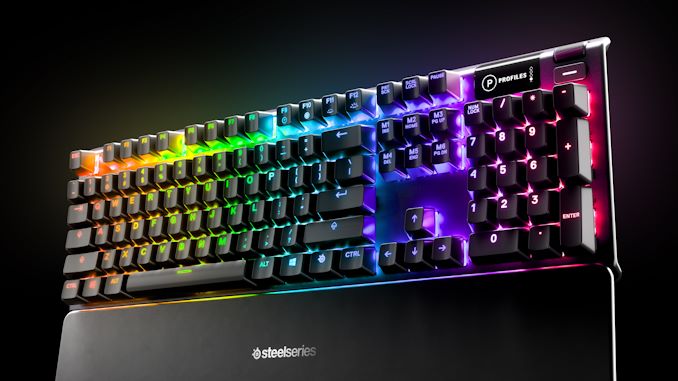
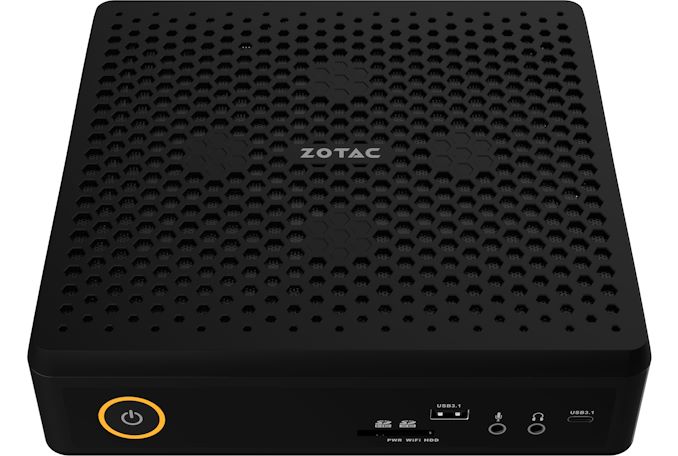
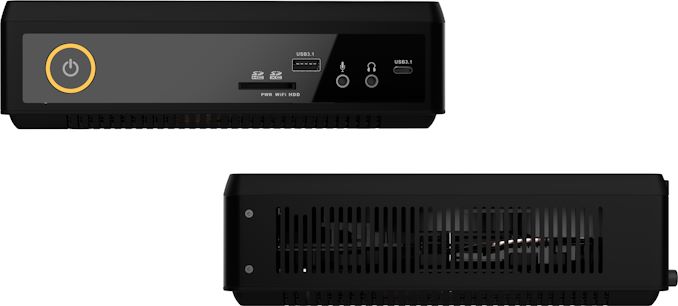

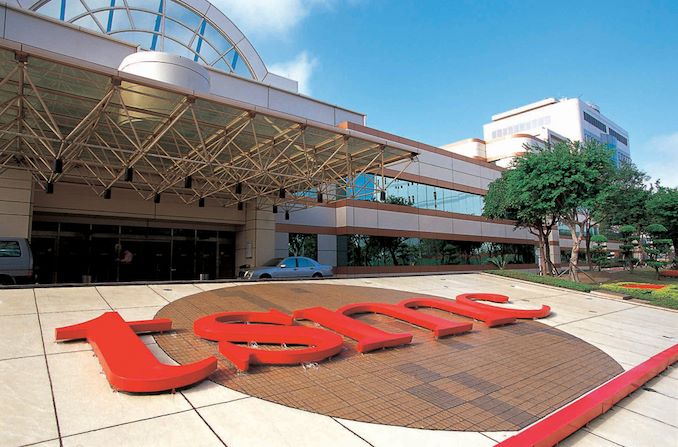
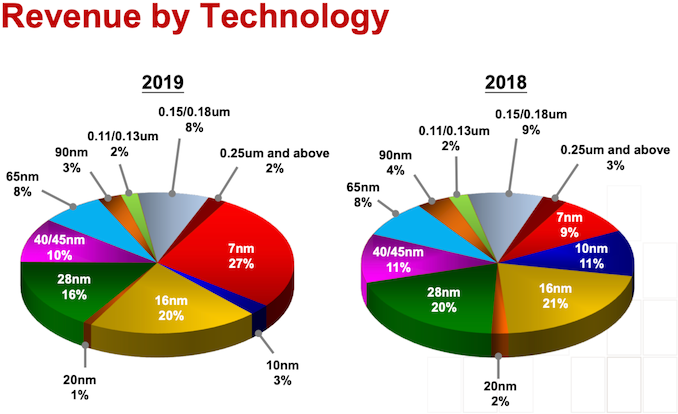
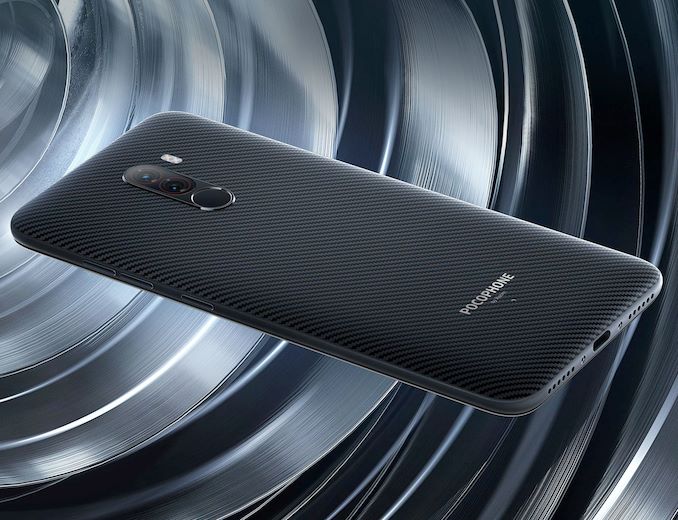
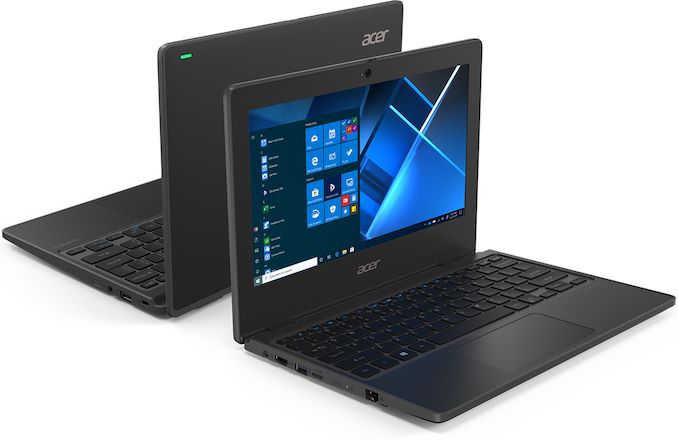
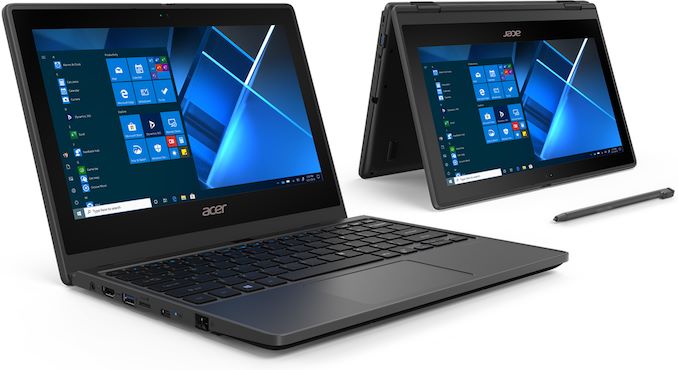
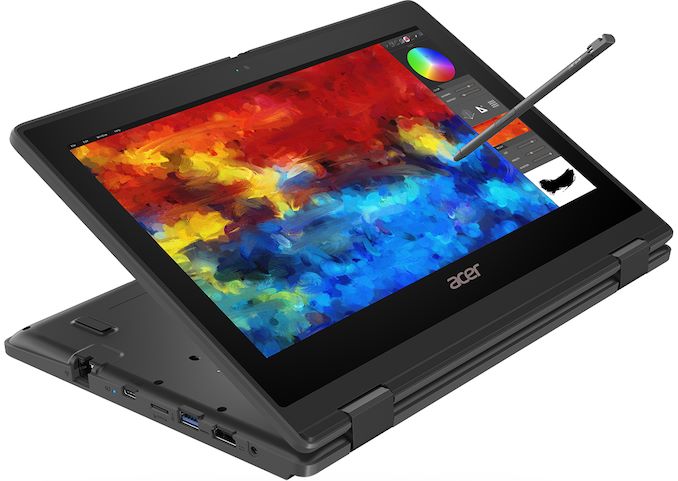
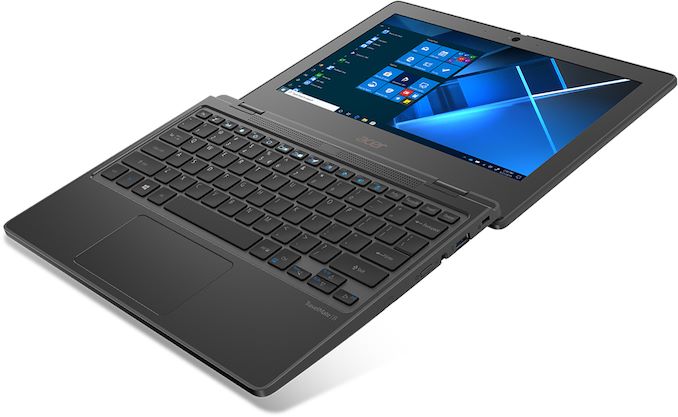
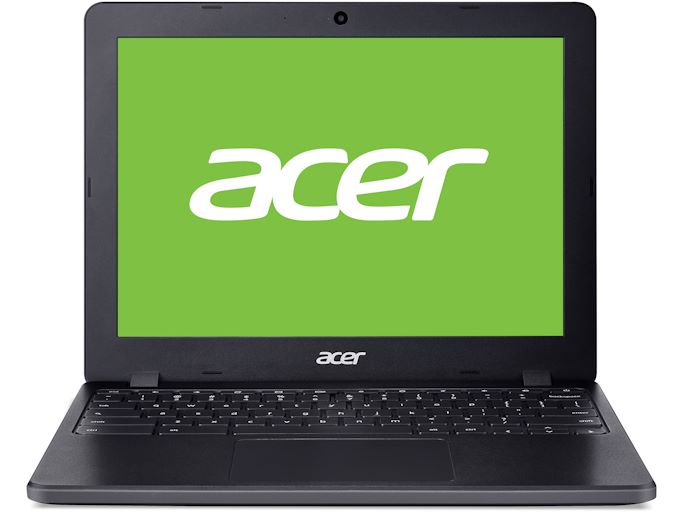
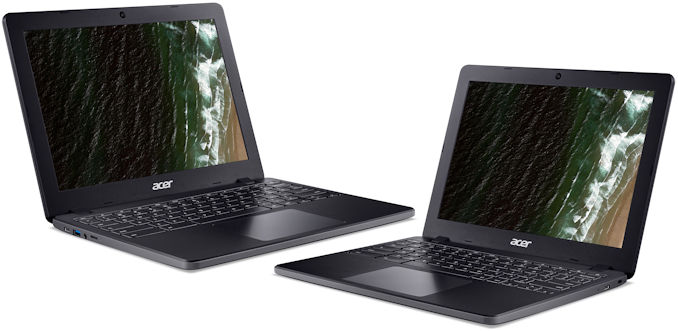
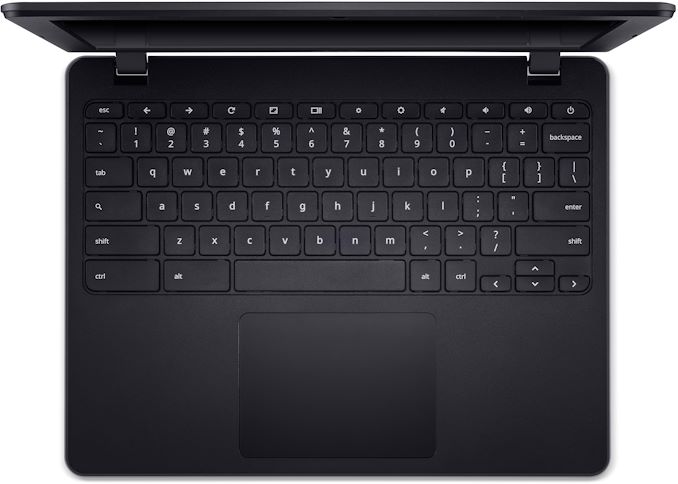

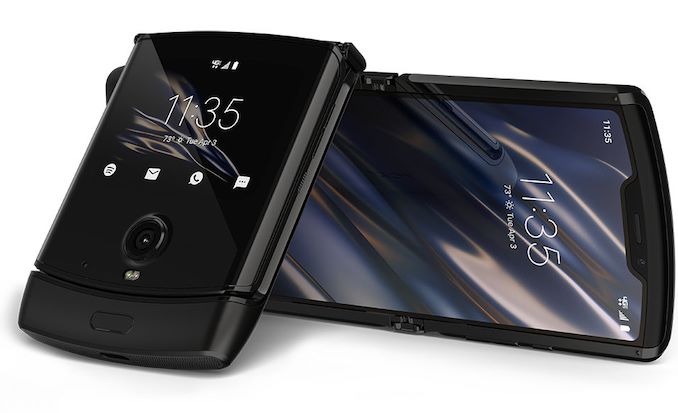
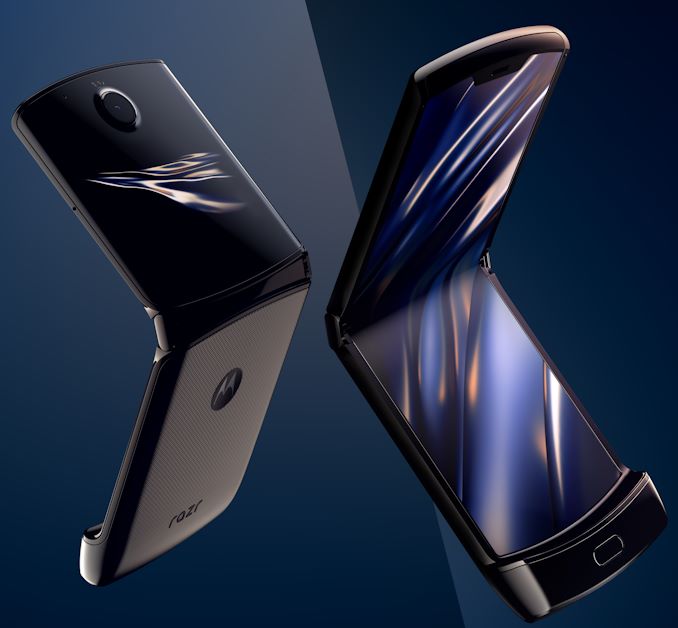
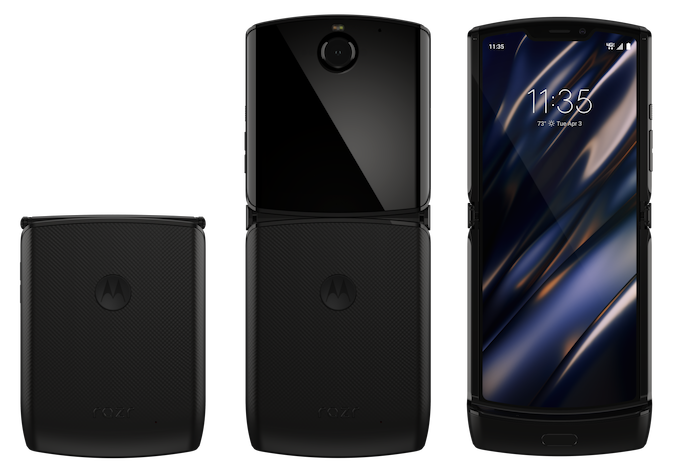

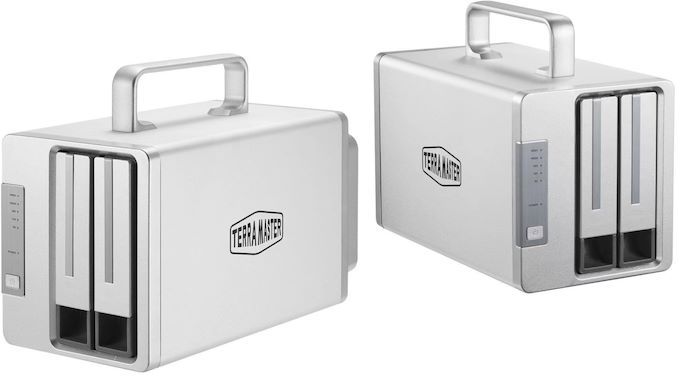
















Bookmarks